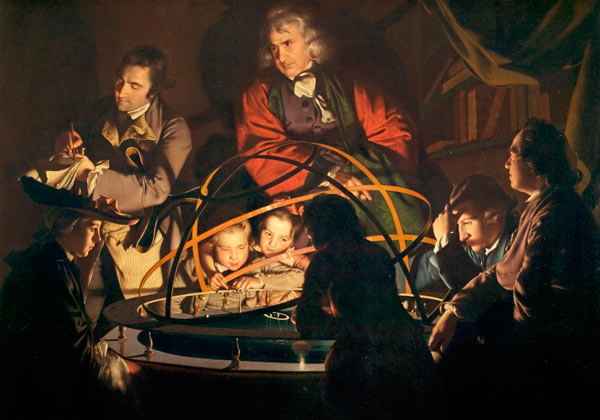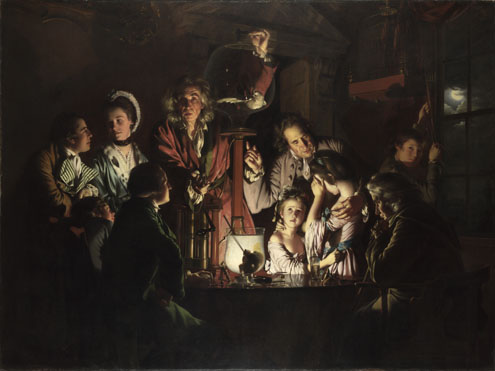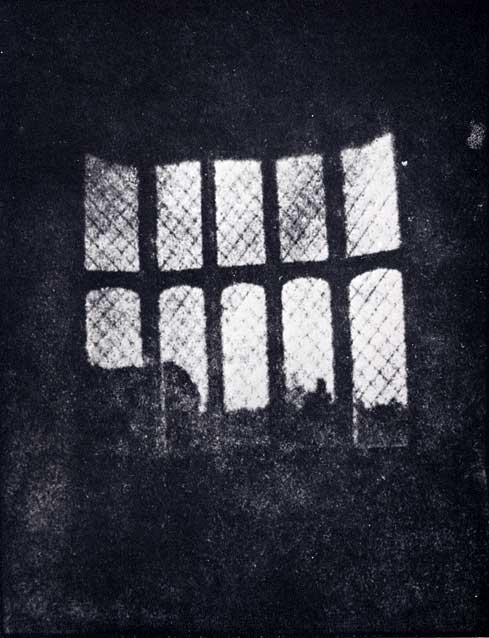Painting - Joseph Wright of Derby. ‘A philosopher lecturing on the Orrey’ 1766. Oil painting.
Location: Derby Museum and Art Gallery
The light in this painting could represent knowledge, hope, daylight or the sun.
Enlightenment Movement. (Also known as Age Of Reason)
The purpose of Enlightenment was to reform society using reason and advanced knowledge through science, rather than before when it was tradition and faith. It started challenging the Orthodox Church in Britain, prompting science and ending superstition, prior to enlightenment, things were based on superstition rather than fact. In the enlightenment movement, modern science was born.
Location: Derby Museum and Art Gallery
The light in this painting could represent knowledge, hope, daylight or the sun.
Enlightenment Movement. (Also known as Age Of Reason)
The purpose of Enlightenment was to reform society using reason and advanced knowledge through science, rather than before when it was tradition and faith. It started challenging the Orthodox Church in Britain, prompting science and ending superstition, prior to enlightenment, things were based on superstition rather than fact. In the enlightenment movement, modern science was born.
Painting - Joseph Wright of Derby. ‘An experiment on a bird in the air pump’ 1768.
Location: National Gallery, London.
Both paintings by Joseph Wright of Derby were produced during the part of the Enlightenment movement, they show the beginning of science being taught and how people had started to experiment. Both paintings also have a feeling of hierarchy, the philosopher going down to younger men and women to children. With these type of paintings, Wright invented a new subject which was scenes of new machinery and experiments, and also showing the beginning of the Industrial Revolution.
Philosophers John Locke (1632 - 1704), Pierre Bayle (1647 - 1706), Baruch Spinoza (1632 - 1677), Voltaire (1694 - 1778) and physicist Isaac Newton (1643 0 1727) sparked the movement which originated about 1650 - 1700. The intellectual leaders of the movement regarded themselves as elite and courageous, they saw that they wanted to lead the world out of a long period of doubtful tradition, full of irrationality and superstition and towards progress. For the French and American revolutions, the Latin American Independence movement and the Polish constitution of May 3, it provided a framework, it also lead to the rise of Capitalism and the birth of Socialism.
It is matched by the high baroque and classical eras in music, and the neo-classical period in the arts, it receives contemporary application in the unity of science movement which includes logical positivism.
Photography was born in an era of classicism, which harked back to ancient Greek and Roman sources.
Classicism.
In the arts, classicism set standards for taste which the classicists seek to emulate, and referred generally to a high regard for classical antiquity. The art typically seeks to be formal and restrained. Classicism is often present in post-medieval European and European influenced traditions. Some periods, however, felt that they were more connected to the classical ideals than others, particularly the Age of Enlightenment. Age of Enlightenment (or Age of Reason) rejected supernatural ideas and focused on nature as experience by humans (humanism) which enabled closer measurement and to be experimental. Georgian houses in the classicism era all had symmetry, balance and proportion, which was what it was all about.
Joseph Hayden Symphony ‘Le Matin’ - Adagio - Allegro (circa 1761). The music is almost a metaphor for Enlightenment, awakening. Enlightenment is a kind of awareness.
Classicism, the art movement, is founded upon aesthetic attitudes based on the art, literature and culture of ancient Greece and Rome. Proportion, simplicity, form and restrained emotions are emphasized in the movement. During the Renaissance the first major revival of Classicism happened resulting from a fresh interested in Roman and Greek culture, the interest was once again sparked in the 18th Century by the discovery of Pompeii and Herculaneum, this period is defined as Neoclassicism which is also considered as the first phase of the Romantic movement.
Camera Obscura.
The camera obscura literally means dark room, camera - dark, obscura - dark. It is a device which makes use of an optical phenomenon, this happens by light rays passing through a small aperture and they reverse themselves onto a screen which is parallel to the aperture.
Georg Brander Table Camera Obscura. 1769. Engraving. Gernsheim Collection.
The table camera obscura became a very early tracing device used for artists. Camera obscuras became portable boxes in the 16th century as technology improved. Mirrors and lenses were incorporated into the camera obscura, making the reflected image view-able onto a viewing surface, visible outside of the box. Draftsmen and painters would use portable camera obscuras as aids for their work.
Reinerus Gemma-Frisius, Camera Obscura 1544. The illustration is depicting an eclipse using a camera obscura.
Jan Vermeer - Officer and Laughing Girl. 1658, Oil on canvas.
There is no documentary evidence that Vermeer used a camera obscura for this painting, the only source of information is the painting itself. In the 17th century it was unusual for human figures to be unequal in size in a similar composition of this kind. The officer is disproportionately larger than the seated girl, but the perspective of Vermeer’s painting is correct in geometrical sense. Today we are familiar with foreground objects appearing larger than those behind. If Vermeer did in fact use an optical device to create this painting, he didn’t recreate it exactly, the architecture is still constructed to the laws on linear perspective.
The word photography is derived from the Greek words photo (light) and graphein (to draw). The word was first used by the scientist Sir John F.W Herschel in 1839.
Joseph Nicephore Niepce was the first person to fix a photographic image using a camera obscura in 1827. To create the photograph, Niepce placed an engraving onto a metal plate coated in bitumen and then exposed it to light. The whiter areas let light react with the chemicals on the plate where as the shadowed areas of the engraving blocked the light. He then placed the metal plate in a solvent and gradually an image appeared until it was then invisible. The photograph took eight hours of light exposure to create, and as soon as it appeared it would fade away.
Louis Jacques Mande Daguerre (1787 - 1851) is recognised for his invention of the Daguerreotype process of photography. Daguerre became known as one of the fathers of photography.
The Daguerreotype is a direct positive made in the camera on a silvered copper plate. The surface of the Daguerreotype is like a mirror, with the image made directly on the silvered surface, this makes it very fragile and can be rubbed off with a finger, the finished plate has to be angled to reflect some dark surface to view the image properly, the photo can change from a positive to a negative. Cases that were provided to house the Daguerreotypes have a cover lined with velvet or plush to provide a dark surface that reflects into the plate for viewing.
The French Government acquired the rights of Daguerre in exchanged for a lifetime pension for Daguerre and Niepce's son, and on 8th August 1839 the French presented the invention as a gift 'free for the world' and complete working instructions were published. Daguerre's agent in England applied for a British patent just days before France announced the invention free to the world. Because of this, Britain was uniquely denied France's free gift and became the only country where the payment of licence fees was required.
The Calotype method, or talbotype method, was an early photographic process introduced by William Henry Fox Talbot in 1841. The term calotype come from the Greek (kalos) 'beautiful and (tupos) 'impression'.
Calotype method:
1. Paper would be soaked in sodium chloride solution.
2. It would then be soaked in silver chloride.
3. It would then be placed in a camera obscura and be exposed to light.
4. The photograph would then need to be fixed in sodium chloride.
The first negative was produced by Talbot which was 'The Latticed Window at Laycock Abbey' August 1835. The negative still exists today and is locked away in a vault in a museum and has only been brought out 2 or 3 times.







No comments:
Post a Comment